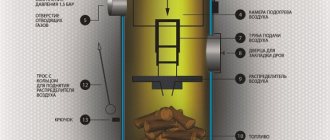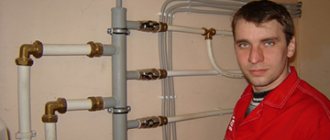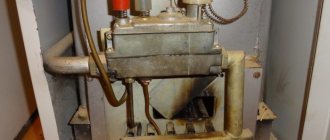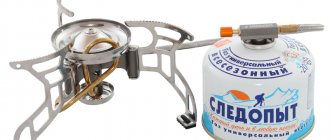Coal is a very diverse and multifaceted compound. Due to its peculiarity of formation in the bowels of the earth, it can have very different characteristics. Therefore, it is customary to classify coal. How this happens is described in this article.
Fossil coal is mostly mined from the bowels of the earth, but sometimes, as a result of seismic activity, coal seams come to the surface, where open pit mining is possible. But where does the coal in the earth's crust come from? Coal formation is a very long and complex process that originates from common plants. When plants die, peat is formed from them with a lack of oxygen and high humidity. Over millions of years, this peat settles into the ground, where, due to high temperature and pressure, it slowly turns into coal. This process is called coalification.
Fossil coal can be found by humans at various stages of coalification, so there are many types of this resource. In total, there are several types of classifications of coal: composition, origin, size, moisture content, the presence of impurities, as well as many other characteristics. Let's take a closer look at some of them.
Coal classification by lump size
To extract coal from the ground, it must be crushed and brought to the surface. The resulting pieces can be of different sizes, which is important enough for further use. For this reason, there is a state standard (GOST R 51586-2000), which defines the classification of coal by the size of the pieces. These sizes are sometimes referred to as coal grades so as not to be confused with the grades discussed later.
| Class name (abbreviation) | Dimensions in mm |
| Plate (P) | From 100 |
| Large (K) | 50-100 |
| Walnut (O) | 25-50 |
| Small (M) | 13-25 |
| Seed (C) | 6-13 |
| Shtyb (W) | Until 6 |
If the coal has not yet been sorted and has in its composition pieces of completely different sizes, then such coal is called ordinary (P).
There are also mixed grades, i.e. mixtures of coals of different sizes within certain limits. But the percentage of coal of each class is not regulated in this case. The mixture may consist, for example, of 95% seed and 5% stem, in which case the variety will be called seed with stem.
| Class name (abbreviation) | Size in mm |
| Large with slab (PC) | From 50 |
| Walnut with large (KO) | 25-100 |
| Small with nuts (ОМ) | 13-50 |
| Small seed (MC) | 6-25 |
| Seed with a spike (SSh) | Up to 13 |
| Small with a seed and a spear (ISSH) | Up to 25 |
| Walnut with small, seed and pine nuts (OMSH) | Up to 50 |
Coal classification by grade
As already mentioned, coal can differ in composition. It is extremely difficult to isolate specific compounds in the composition of coal, therefore, in order to characterize coal, only some of the characteristics are used: the concentration of volatiles, humidity, carbon content, heat of combustion, etc.
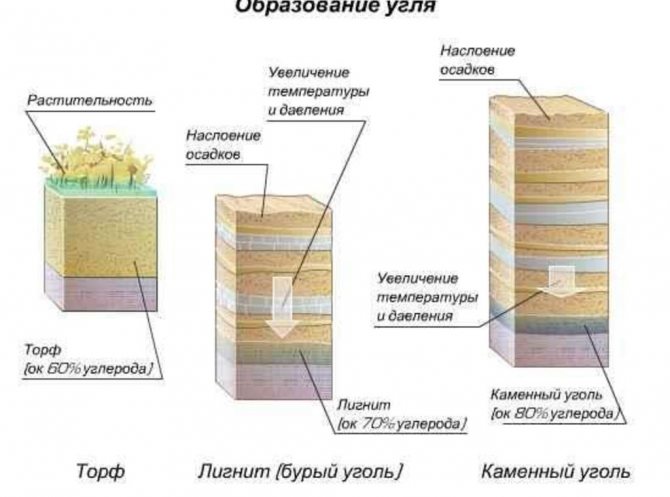
Usually all of these characteristics are related. The more carbon content in coal and less volatile matter, the more heat the fuel can provide. According to these characteristics, coal is divided into grades.
Charcoal properties
The chemical composition of charcoal is determined by the pyrolysis temperature. The mass fraction of oxygen, hydrogen and volatiles depends on this process. During the heat treatment of the substance, its structure is compacted. The proportion of O2 and H2 decreases, which leads to a decrease in electrical resistance and an increase in the density of the substance.
The presence of macroradicals (paramagnetic centers) in the composition of coal determines its high reactivity when interacting with oxygen.During this process, a combustion reaction occurs. As a result, low molecular weight products are released, including H2O. The peculiarities of the course of the reaction affect the specific gravity of the formed charcoal. Its average value is 210 g - 1 liter.
This mineral has the following physical characteristics:
- substance density: up to 380 kg / m2;
- specific heat: up to 1.21 kJ / (kg × K);
- electrical resistance: up to 0.5 × 109 Ohm × cm;
- thermal conductivity: 0.058 W / (m × K);
- specific heat of combustion: 3.4 × 107 J / kg.
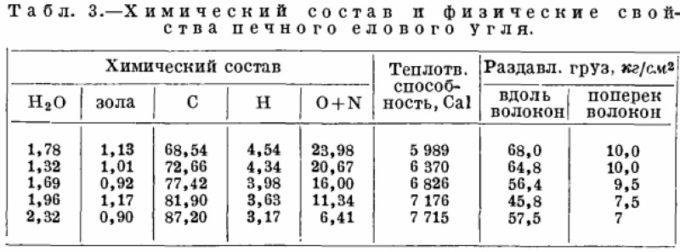

Charcoal is a porous material with a high carbon content. Due to the presence of pores, it has sorption properties. The material can absorb toxic gases, water and water vapor. Due to the presence of sorption properties, the substance is able to filter alcohols, amino acids and other liquid elements.
Due to the low ash content (up to 3%), the combustion of this substance practically does not form combustion products containing various chemical elements. For this reason, this material is one of the most environmentally friendly types of fuel and is actively used for cooking food in a grill, oven and retorts.
The burning temperature of charcoal is equal to 1200-1300 ° C, which makes it possible to use this raw material for forging metal in forges. It has high thermal conductivity, which is ensured by the low moisture content of the substance. This indicator is influenced by the burning temperature of charcoal. During the production of charcoal with your own hands or on industrial equipment, the material is charred when heated to the combustion temperature. After the end of production cycles, it acquires a gloss and a blue tint.


According to GOST 7657-84, this mineral is classified as a low-hazard substance (hazard class: 4). Dust generated during the combustion of the material can irritate the body and cause respiratory diseases. May pollute the environment under improper storage and operating conditions. The substance is capable of spontaneous combustion.
Brown coal (B)
It is the youngest and therefore the least useful coal grade. It looks like a brown mass of stone. Sometimes a woody structure is even noticeable on it. The heat output is only 22 MJ / kg. The reason for this is the low carbon content, a large amount of moisture, volatiles and mineral impurities. All this does not provide efficient combustion.
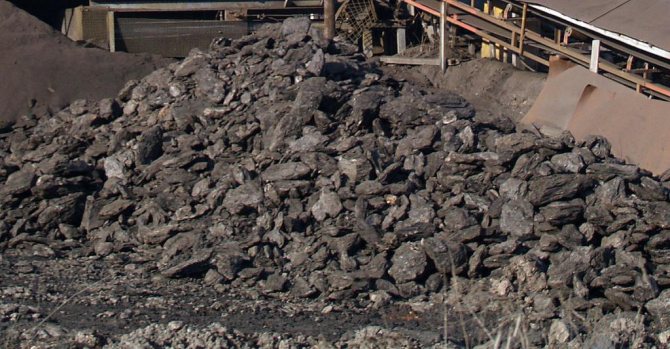

Such coal is formed directly from peat and lies at a shallow depth (from 10 to 200 meters). In Russia, it is mined at the Solton deposit, in the Tunguska and Kansk-Achinsk coal basins.
Long flame coal (D)
It is usually gray-black in color. It burns with a long smoky flame, which gave it its name. It contains 70-80% carbon, which makes it a slightly better fuel than brown coal. It is also affected by less moisture and impurities. But this is not the advantage of long-flame coal. This fuel can burn without blowing, which makes it easy to use in furnaces and boilers. This type of coal is very common. It is mined in Minusinsk, Kuznetsk, Donetsk and many other basins.


Stoves and fireplaces do it yourself
Soot is a product of incomplete combustion of fuel. Combustion is an oxidation reaction. The carbon contained in the fuel is oxidized to carbon dioxide under optimum conditions.
C + O -> CO2
If there is not enough oxygen during combustion, carbon monoxide is formed. CO
The two main causes of soot formation are insufficient combustion temperature and insufficient oxygen.
To make the combustion of firewood more complete, you need to raise the temperature in the firebox as much as possible. To do this, it is necessary to exclude the cooling of the firebox by the hob, boiler, etc.Also, to increase the temperature in the firebox, a fireclay grate is made in its upper part, which reflects part of the radiation back into the firebox, increasing the temperature there.
A lot of soot is formed in long-burning metal furnaces. In addition to the fact that the metal walls of the stove greatly cool the firebox, the air supply is still limited there, and the wood no longer burns, but smolders. In such ovens, problems often arise due to the formation of soot in the chimney.
The completeness of fuel combustion can be judged by the color of the smoke coming out of the pipe. The lighter the smoke, the more completely the fuel burns. Black smoke is the soot particles emitted together with the flue gases. Most of the soot is deposited on the walls of the chimneys. With complete combustion, the smoke from the chimney is not visible at all, and with frost for -30, steam comes out.
I also noticed that when throwing a large amount of firewood (5-6 logs) into the firebox with coals when the blower is open, black smoke goes out of the chimney for 5-7 minutes, then it brightens. If in this case the blower is closed and the air is supplied through a slightly open burner, then the smoke is light.
Smoke from the chimney
When throwing a small amount of firewood (2-3 logs), I did not observe black smoke.
The deposition of soot in the chimney worsens the heating of the stove, because soot is a heat insulator, and the larger the soot layer, the less the furnace wall heats up and the more heat escapes into the chimney. The constant formation of soot leads to a narrowing of the chimney and, as a result, a decrease in draft. In this case, smoke begins to go out into the room.
Most of the soot is formed at the bends of the chimneys. In these places should be provided for reading. It is imperative to provide for cleaning under the pipe. Through it it will be possible to remove the soot during mechanical cleaning of the chimney.
To reduce the formation of soot in the furnace, it is necessary to mop the channels during construction, so that there are as few irregularities as possible on which soot is deposited. It is also advisable to insulate the pipe. If the soot is not cleaned for a long time, then it thickens over time and it will be more difficult to clean it later.
Garbage, such as plastic bottles, bags, must not be burned in the oven. Plywood and chipboard also contain substances that contribute to the formation of soot. I have one client in 2 months completely planted a new stove with wood chipboard waste.
It is recommended to mechanically clean the chimney from soot once a year.
Honestly, I do not follow this recommendation at my oven. For 11 years, how much does the stove cost, I have never cleaned it from the roof. In the summer, somehow, there is no time, but in the winter it is dangerous to walk on the roof. So far, there has been no urgent need for cleaning.
To keep the soot in the stove at a minimum, I heat the stove with well-dried wood, and also occasionally burn dry aspen wood and dried potato peelings. After the cleaning of the purifications, during the next 2-3 furnaces, soot flakes fly out of the chimney along with the smoke. I even made a video about this.
Soot control
Oily charcoal (F)
This is already a fairly high-quality coal. Despite the fact that it ignites heavier than the previous two brands, it has a high calorific value (35 MJ / kg). The disadvantage is the high content of volatile substances, which complicates the control of the combustion process, therefore, this coal grade is rarely used as a fuel. The main areas of its use are the production of building materials, activated carbons and other useful substances, as well as in the by-product coke industry. Such coal is mined in the Osinovskoye, Baidaevskoye, Leninskoye and Tom-Usinkskoye deposits.
Features of the grill


Thanks to the well-thought-out design of the device, the fat flowing from the meat collects at the bottom of the large steel bowl and does not touch the hot coals. Therefore, during the operation of the grill, no harmful or hazardous substances are formed, and there is no smoke at all. The thick double body keeps the device cool all the time, so it can be moved freely even while frying something.
The device runs on charcoal or briquettes, so its operation will be very economical and as simple as possible. The hearth, protected from contact with droplets of fat, is a guarantee of maximum ease of use. The fan is equipped with AA batteries and supplies a certain amount of oxygen to the device, which allows it to regulate the temperature and light up quickly (and very quietly). The important thing is that smokeless grills do not pose any danger to the environment.
Coke coal (K)
This is a very valuable type of coal due to its low prevalence. Very high quality coal coke is obtained from this brand, as the name implies. Such coal is formed at a sufficiently great depth (5500 m), where there is great pressure. The color of this coal is gray with a glassy sheen. It has a very homogeneous structure and a minimum number of pores. The content of volatile substances is moderate (22-27%), and carbon already reaches 88-90%, which has a positive effect on heat transfer, although such coal is rarely used as a fuel. Coke coal is mined in the Kuznetsk coal basin, in Anzhersky, Tom-Usinsky, Prokopyevsko-Kiselevsky and other regions.
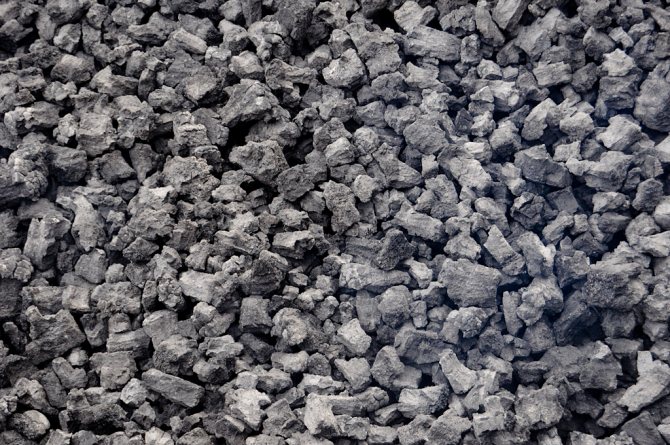

Lean-sintered coal (OC)
This grade of coal does not differ much from coke oven coal: the content of carbon and inorganic impurities is approximately at the same level. Its main advantage is its high calorific value. It is 36 MJ / kg, so it is sometimes used as a fuel in power plants. But its main use is in the by-product coke industry. True, this coal is coked with difficulty, so it has to be used in a mixture with other types of coal. Such a mixture of several brands is called a coal charge. Lean-caking coal is mainly mined in the Kuzbass, in the Kemerovo region and in the South Yakutsk coal basin.
Lean coal (T)
This brand of coal received such a funny name because of the relatively thin layers with which it lies in the rock. This is due to the great depth (6600 m) and great pressure. Unlike the previous two types, lean coal does not have the ability to sinter, and it is almost impossible to produce coke from it.


But it has a very high heat of combustion up to 40 MJ / kg. This leads to its use as a fuel, as well as in metallurgy, where an extremely high temperature is required in furnaces for melting metals. The main areas for the production of lean coal are Aralichevsky, Baidaevsky and Kemerovo districts.
Just watching how everything burns down How and why Siberian forests burn. Report by Ilya Zhegulev
Boguchansk District, Krasnoyarsk Territory, August 9, 2020
Sergey Stroitelev / Sputnik / Scanpix / LETA
This summer, forest fires in Siberia and the Far East, according to the state Avialesokhrana, affected more than nine million hectares of forest. At the peak, more than two million hectares of taiga burned simultaneously, and smoke covered not only the large cities of Siberia, but also the Urals and even the Volga region. The Rosselkhoznadzor has estimated the economic damage from the disaster at seven billion rubles. After several weeks of the spread of the fire, the federal authorities got involved in putting it out. Russian Prime Minister Dmitry Medvedev said that the cause of the fire could be arson, which is arranged specifically to hide illegal logging. US President Donald Trump even offered his help in extinguishing. Before the start of an active fight with the fire, the behavior of officials was explained by the governor of the Krasnoyarsk Territory, Alexander Uss. He stated that wildfires are "a common natural phenomenon, which is senseless to fight, and maybe even harmful somewhere." Ilya Zhegulev, a special correspondent for Meduza, went to Krasnoyarsk to see how fires are being put out in Siberia and why loggers are actually setting fire to taiga there.
Emergency Situations Ministry helicopter pilot Denis Kurnosenko is filming an Instagram story with Emergencies Ministry officers unloading from his Mi-8 at Boguchan airport in Krasnoyarsk Territory. “Don't swear there, I'm filming this for social networks,” the pilot laughs at the sight of a team of firefighters who have been in the forests in the Boguchansky District hurriedly throwing out their backpacks, equipment and dry rations from a helicopter. Later, Kurnosenko will publish a post that "people and rains have defeated the fire element < ...> which means it's time to go home."
It will be August 16, and just a day later Krasnoyarsk will once again be covered with smoke over the summer and the city will even be ranked first among the cities in the world with the dirtiest air according to the Air Visual service.
Forest fires in Siberia have been going on for several weeks; in mid-August, the area covered by the taiga fire, according to Greenpeace, reached its maximum since the beginning of 2020. It amounted to 5.4 million hectares - this is comparable in area with Belgium. According to the official data of Avialesoohrana, less than 800 thousand hectares are on fire.
According to ecologists, this is a record for the entire history of observations - that is, since 2001. The forest burns mainly in hard-to-reach places, in which no one usually extinguishes fires, but after the public campaign, they began to extinguish the fire in places far from settlements.
Reaction to fires and government inaction
- "Burn, burn, my country." Monetochka released a video for a song about forest fires in Russia
- A journalist who demanded to extinguish forest fires resigned from Novosibirsk TV. He said a phrase that turned into a meme "economically unprofitable"
The firefighters of the Emergencies Ministry in the Krasnoyarsk Territory, whom Meduza's correspondent spoke to, unofficially admit that there is no sense in putting out large fires located far in the taiga - they manage to extinguish little, and all efforts are directed rather not to fighting the fire, but to fighting public discontent ... And it literally depends on where the wind is blowing - as soon as the smoke goes to Krasnoyarsk, there is more indignation. As soon as the wind changes, the media and social networks forget about the fires. The fire is far from settlements and does not directly threaten them. But over this summer, the fires managed to turn into an argument in political disputes - of regional, federal and international significance.
Emergency Situations Ministry rescuers are returning from firefighting to Boguchan airport.
Ilya Zhegulev / Meduza
Assistant Trump
By the end of July, there was a lot of writing about burning Siberia in the media and social networks. Russian celebrities (for example, rapper Basta, comedian Ilya Sobolev, actress Maria Kozhevnikova and others) participated in a flash mob - urging officials to pay attention to the Siberian fires. And even at protest rallies in Moscow in late July and early August, calls were made to the authorities not to disperse the demonstrators, but rather to engage in fire in the distant taiga.
Against this background, a video filmed on the phone at the Biryusa youth forum immediately went viral on the Internet. In the video, the Governor of the Krasnoyarsk Territory Alexander Uss explains to young people why not all forest fires need to be extinguished. “There is a category [of forests] called a control zone - by definition, fires are not extinguished there. And there is a [fire] protection zone where fires are extinguished, ”Uss said. He added that fighting forest fires in the deep taiga "is pointless, and maybe even harmful somewhere." According to him, fire in deserted forests most often breaks out because of a thunderstorm, and this happened "a hundred, and two hundred, and three hundred years ago."
Uss's statement quickly became a meme “Putting out is not economically feasible” (although Uss did not say these words), and the Krasnoyarsk governor will turn into a symbol of officials' inaction against the backdrop of a spreading disaster.
A little later, on July 30, Prime Minister Dmitry Medvedev spoke about the fires at a government meeting in different terms, but in exactly the same logic.“So far there is no immediate threat to the safety and life of people, but the forecast is difficult,” he said. - We must not allow the growth of fire to the borders of settlements. We all remember the experience of 2010, when the whole country was on fire, the situation was very difficult. " The Prime Minister asked to take the issue under special control, Minister of Natural Resources Dmitry Kobylkin - to fly to Siberia and assess the situation on the spot, and the Ministry of Emergency Situations - to consider proposals to help the regions in the fight against forest fires.
The very next day, July 31, government structures changed the logic of their actions - the Ministry of Emergency Situations announced that it had already joined the work. Moreover, the President of the country Vladimir Putin ordered to involve the Ministry of Defense in extinguishing the burning forests.
The head of Boguchansk forestry, Yuri Galamiev, is sure that this sudden activation is the merit of US President Donald Trump.
Galamiev does not see an acute problem in the fact that the forests are on fire. When asked why such vast areas are covered by fires this year, he sighs and begins a long explanation that this phenomenon is in the order of things. “There have always been fires, millions of years before us. It is like rock change, soil acidity, it was, is and will be. Previously, fires were not extinguished at all. They lit up from summer and burned until autumn, ”he explains.
In his opinion, the difference between this year and the previous ones is only in one thing: Donald Trump told Vladimir Putin during a telephone conversation about this problem. And he offered his Russian colleague help in the fight against the elements. “Our homeland was hit in the nose. For the first time in the history of extinguishing forest fires, - the head of the forestry reproduces the logic of the federal center. - [Actor and conservationist who posted on his Instagram a post about fires in Siberia] DiCaprio - God be with him, he doesn't care what raccoons protect, what penguins, what forests. "Greenpeace" - so generally some kind of hirelings, clearly hostile. You can split sores, you can help. But then America offered help to Russia. We didn’t offer, as we always did, but they did. Usually the position of the strong is to help the weak. We were humiliated. We were simply humiliated. We were told: you cannot, you cannot. "
Extinguishing a fire from a Mi-8 helicopter. Boguchansky District, August 4, 2019
Alexander Kryazhev / Sputnik / Scanpix / LETA
Galamiev is sure that if it had not been for the conversation with Trump, the federal center would not have sent additional assistance from the Ministry of Emergency Situations to the Krasnoyarsk Territory, nor the soldiers taking part in extinguishing the fires.
The main arguments of the Krasnoyarsk regional authorities, which they express in the local press, are that the scale of the disaster is not more than usual, and that there is no harm to people's health. Deputy of the Legislative Assembly of the Krasnoyarsk Territory Ivan Serebryakov criticizes his political opponent, the head of the Ussa region, referring to the figures. The deputy states that on August 8, 2020, the area of fires in the region was 975 thousand hectares, while on the same day a year ago - 543 thousand hectares, almost two times less. And two years ago - in 2020 - only 198 thousand.
“The governor says, they say, there are as many forests burning [as always]. But this is pure lies, ”Serebryakov says.
Critics of the authorities also have doubts about the effect of smoke from fires on human health. In Krasnoyarsk, thermal power plants operate on coal, and an aluminum smelter is located within the city limits, so air purity is an important issue here. Politicians and social activists are organizing rallies against the "black sky", and local media are calculating how many days in a row Krasnoyarsk was covered with smog this time and what dangerous substances are contained in the cloud.
Krasnoyarsk entrepreneur Igor Shpekht is the founder of the Nebo.Live public air cleanliness monitoring project. In 2020, he bought the first sensor-analyzer, and offered to raise money for several others around the city - many supported the idea.You can see how air pollution is changing in real time on the project website. The smoke of forest fires was also monitored this summer, their impact on human health, according to Specht, was catastrophic.
“Our curse is that we [residents of Siberian cities] are very far from each other. When something happens in the north of the region, no one will notice, ”Specht says. The environmental activist is sure that the acute public reaction to the fire in the taiga this year is definitely not because of the ambiguous statements of the governor of Uss, but because of the natural features. “In the past, fires were the norm and became a disaster [in 2020] only because the smoke reached cities that it had never reached before. Previously, smoke went around Evenkia, some went to Canada, some to Alaska, the smoke dissipated. And when the wind direction was only in one direction for a long time, then everyone realized the scale of what was happening. "
How, when calculating fire damage, the authorities do not consider damage to human health and nature
- Forests are burning in Siberia, cities are in smoke, and the authorities say that fires can not be extinguished. It's true?
In early August, the head of the region, Alexander Uss, said that "a radical change has come in the fight against the fire element on the territory of the Krasnoyarsk Territory." Igor Shpekht reacts to this statement in the same way as another critic of Uss, deputy Serebryakov: “The Governor of the Krasnoyarsk Territory is lying. The situation has not changed in any way. We keep track of how many hectares are burning every day. I don’t know what he is doing there, but the area of fires has only increased. ”
Dew as a fire-fighting agent
Unlike the distant taiga, where fires start spontaneously, in places where logging takes place, they can be arranged on purpose. And also - the fire can appear due to non-observance of safety precautions at sawmills.
Vladimir Maksimov moved from Krasnoyarsk to the northern regional center of Boguchany several years ago to look after sick parents. In Krasnoyarsk, he was engaged in the design of engineering systems in buildings, including large shopping centers. An eight-hour drive from the regional capital, in the village-regional center of Boguchany, most of the buildings are huts. Knowledge of engineering systems is not in demand here, so Maksimov does everything in a row - from designing bus stops to selling milk of his own cows. And also - he is the most famous blogger in Boguchany. Maximov often tweets information about fires and forests. In mid-July, his blog looked like this:
While we are driving his “UAZ-patriot” out of town, Maksimov leads a short excursion, telling (and showing) how the forest is mined in Boguchany. “Vitya Fedorov lived here,” the blogger points out to a house that is different from others, but not too luxurious. - This was the main overseer here, Lyapa's protege [the Krasnoyarsk authority Viktor Lipnyagov, who was killed in 1993]. I went to Lyapa with a report and accidentally got a bullet in the stomach. Fedorov, according to Maksimov, "kept" mostly illegal loggers in Boguchany - the market was criminalized.
Then the bandits were replaced by law enforcement officers and officials. Maksimov recalls the deputy of the regional legislative assembly, Yury Efimov, who is now under investigation - he is being prosecuted for a bribe of 10 million rubles, which, according to investigators, he received for patronage of one of the loggers.
Maksimov is driving along a forest road, which, twisting, taxies to the sign “Angara-lesstroy”. Private property, entry prohibited. " The blogger does not pay attention to the inscription, he drives on - straight to the sawmill, where the Chinese work. “They work like robots, bastards,” says Maksimov almost enviously, looking at the workers sawing logs into planks, never stopping for a smoke break during our stay. - I repaired two sawmills for them here, helped to connect the electrician. I can say that the equipment is very outdated, the last century. "However, the Chinese workers seem to be doing quite well in the old way.
The sawmill senior is very nervous about the presence of strangers, but he cannot say anything - he does not know either Russian or English at all. As a result, he finds a solution - he dials the phone and calls his partner, who at the very least knows the language, so that he would know what the newcomers need.
Maksimov explains that sawdust storage technology is often violated at sawmills, which easily catch fire and can cause a large forest fire. “Now I’ll show you a mountain of sawdust,” he says.
The mountain turns out to be a ravine specially dug to dump sawdust there - with such storage, the risk of fire is lower. Vladimir Maksimov admits: the Chinese are trying very hard to do everything legally, since they, in which case, are the first to be hit. Unlike Russian loggers.
Right on the outskirts of Boguchany, in the forest, there is still a mountain of sawdust as high as a five-story building, and without any ravine. Maksimov authoritatively states that 99% of all forest fires are caused by people - most of the fires are located along forest roads.
The head of the "Boguchansk forestry" Yuri Galamiev, when asked about the mountain of sawdust, replies that they do not pose a significant danger, because dew prevents them from igniting.
A mountain of sawdust in a forest belt near the village of Boguchany
Ilya Zhegulev / Meduza
Black lumberjacks burn the evidence
“Boguchansky district, village Taezhny. Dead end of the Chinese. There are mountains of a felled, burnt forest, ”a photograph was signed published in the Krasnoyarsk public“ News of Krasnoyarsk and the Territory ”. Illegal logging by the Chinese with further arson to cover their tracks is one of the popular explanations for fires.
In addition to sawdust, enterprises accumulate a huge amount of untapped timber, which also ignites very easily. “There is, for example, a serious enterprise“ Kraslesinvest ”, they have tens of thousands of cubic meters of timber dumped but not taken out,” says Vladimir Maksimov.
Another common cause of fire is arson, associated with the cost of the burned forest. Some unscrupulous entrepreneurs set fire to the forest on purpose in order to carry out sanitary felling at this place after some time. The cost of a plot with a "burnt forest" is several times cheaper, because after a fire and sanitary felling the forest producer no longer pays for the cut wood, but, on the contrary, helps to get rid of the burnt one. In a fire, usually only the top burns out, and the main trunk remains, so wood goes to China at the same price as ordinary pine.
The former Minister of Natural Resources of the Krasnoyarsk Territory, Elena Vavilova, also spoke about this scheme. According to her, the forestry in the region is financed by about 40%, the rest they must earn themselves. Cutting down and selling fire-damaged trees is one of the ways to make money. In the program of Andrey Karaulov, Vavilova confirmed that, under the guise of sanitary felling, normal trees are cut down at low prices in the region and then sold to China. True, Vavilova herself is also under investigation - and also because of the forest. According to the prosecutor's office, the official handed over 70 thousand cubic meters of timber to the Krasles enterprise for 3.4 million rubles, and it immediately sold them to other enterprises for 18 million. The trial in the case, initiated back in 2020, has not yet taken place, the case was sent for further investigation.
Paratroopers against Hiroshima
The former head of the Accounts Chamber of the Krasnoyarsk Territory, Tatyana Davydenko, confirms that illegal logging is directly related to fires. “We overlaid a map of the site where the sanitary felling took place and the area from where the fires started,” she tells Meduza. "And they coincided."
According to Davydenko, there are also those fires that ignite by themselves, due to hot weather. It is difficult to name the exact cause of the fire, because practically no fire can be extinguished at the very beginning.And this is the main problem.
Tatiana Davydenko says that until recently there was "a clear system for fighting forest fires", but in 2019 it was broken. “Previously, small planes, 'aeroprakts', patrolled the territory,” says the former official. - The plane flies in a given circle, patrols, looks where the fires are. An observer pilot sits next to the pilot. And when he sees fires, An-2 takes off, where there are 12 parachutists. "
Anthracite (A)
This is the highest quality coal in terms of calorific value. The carbon content in it can reach 98%. Only graphite has more. And in appearance, anthracite is very different from other brands. It has a dark black color with a pronounced metallic sheen. It also has increased heat resistance and electrical conductivity. The combustion temperature of anthracite is quite high, so it cannot be used as a fuel in all types of furnaces. In addition, it is used in metallurgy, for the manufacture of filters, electrodes, calcium carbide, microphone powder. This coal does not sinter, so it has not found application in coking, although even without this process it can replace coke in some processes.
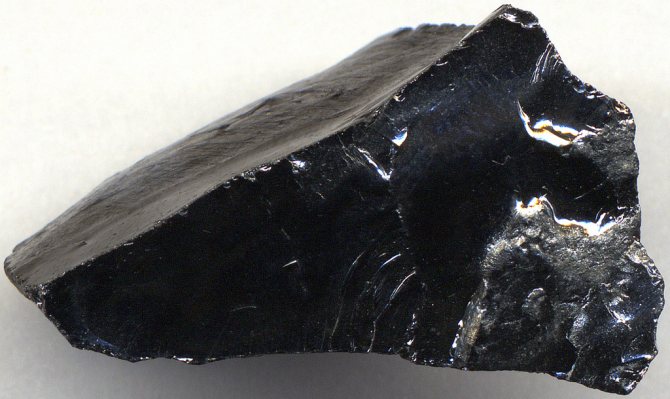

Bituminous coal: origin, types and properties
As a result of processing, rare and valuable metals, coke oven gas, phenols, aromatic hydrocarbons, medicines and many other important products for humans are obtained from this material.
Origin
So where did coal come from on Earth? It took millions of years for this natural wealth to form. The initial raw material for it was various organic remains of dead plants and animals that accumulated at the bottom of large prehistoric reservoirs. In conditions of high humidity and lack of oxygen, they gradually decomposed and turned into peat, pressed under a layer of water and sand, and then solidified, forming coal deposits. This process took place for a long time - according to scientists, the age of the "youngest" coal seam is at least 40 million years.
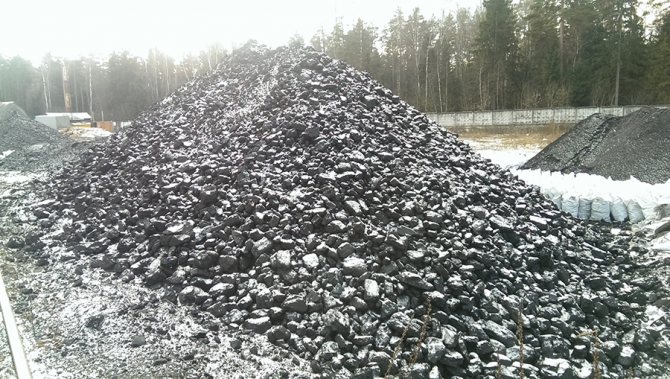

coal-moskva.rf Today, the largest deposits of this mineral in Russia are being developed in the southeast of Yakutia, in the republics of Tyva and Khakassia. Active mining is carried out near the Alatau mountain range, in the Kuznetsk and Pechora coal basins, as well as in the Rostov region. Of course, the reserves of coal are not unlimited, but according to experts, they will last for at least another 270 years.
Coal types
Bituminous coal is an intermediate mineral that sits between brown coal and anthracite. It lies at a depth of about 3 km and contains about 70-80% carbon, due to which it releases a large amount of heat during combustion. It is in this category that long-flame coal, which is widely used for heating, belongs. Anthracite is the hardest and densest rock with the highest carbon content. It is much older than coal: the age of such layers exceeds 280 million years, and the depth reaches 6 km. Anthracite has the highest combustion temperature, and its carbon content is maximum and can reach 98%. Brown coal is a partially formed young rock that occurs at a depth of about 1 km. It has lower performance properties and a low combustion temperature. The structure of this fossil is loose and unstable, and due to which its fractions often crumble during transportation.
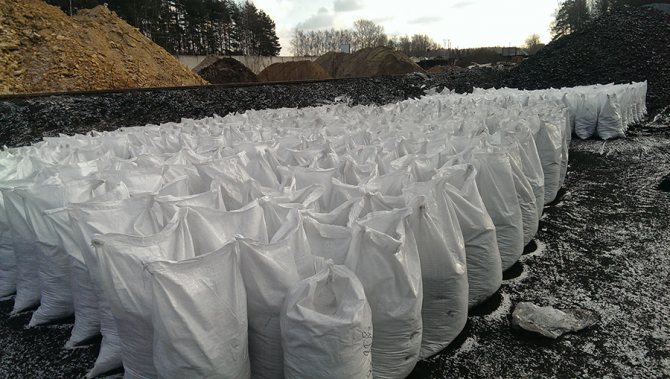

coal-moskva.rf
Coal is also classified by size. Depending on the marking, it can be: P (slab) - divided into large pieces of more than 10 cm.K (large) - in pieces of 5-10 cm in size.O (walnut) - coal in medium fractions (from 2.5 to 5 cm) values. M (small) - divided into fractions from 1.3 to 2.5 cm.С (seed) - long-lasting smoldering coal with a size of 0.6 to 1.3 cm. Ш (shtyb) - coal dust from which briquettes are usually made. If the product is marked with the letter P (ordinary), this means that there is an unsorted breed in the bag, consisting of fractions of different sizes.
Properties
The most important characteristics of hard coal are:
- Heat of combustion.
- Ash content.
- Humidity.
The heat of combustion is also called the calorific value of coal. This parameter is measured in kcal / kg and shows how much heat a unit of fuel generates during combustion. The lowest indicator is characteristic of brown coal, and the highest is anthracite. Their heat of combustion can reach 8600 kcal / kg. Ash content is a percentage value that reflects the amount of non-combustible impurities contained in the rock. The more ash remains in the furnace after burning coal, the lower it is considered to be of quality. As a rule, for coal this parameter is 15-18%. Moisture refers to the amount of water contained in coal. This characteristic directly depends on how efficiently a specific product is used for heating. On average, a moisture content of 12-15% is considered permissible for coal. If the moisture content of the fractions is higher, the material will be heavier, which will directly affect the cost of transportation. In addition, in winter it can freeze, and due to the fumes released during combustion, it will be necessary to increase the amount of fuel for heating.
Storage advice
To prevent the charcoal from losing its original properties, it should be stored in a cool and dry place, away from direct sunlight. During storage, it is necessary to control the ambient temperature: if it exceeds 40 degrees, oxidative processes will start in the rock, which can lead to spontaneous combustion of the fuel. The review was prepared by Noginsk Fuel Enterprise ugol-moskva.rf
For you a discount of 500 rubles has been prepared for the promotional code UGOLMOSKVARF2019
Other types of classifications
In addition to those grades that are presented above, there are many intermediate grades, for example, fatty coke (CG), sintered gas (GS), long-flame gas (DG).
Also, each grade of coal can have different lump sizes. In this case, the letter denoting the grade is placed after the letter denoting the brand. For example, anthracite-nut (AO), fat-plate (ZhP), coke seed (KS).
There is also a classification of coal by origin. All coal, as already mentioned, is formed from plants over millions of years. But plants can be of a different nature. So, coals are divided into humic (from wood, leaves, stems) and sapropelite (from the remains of lower plants, such as algae).
